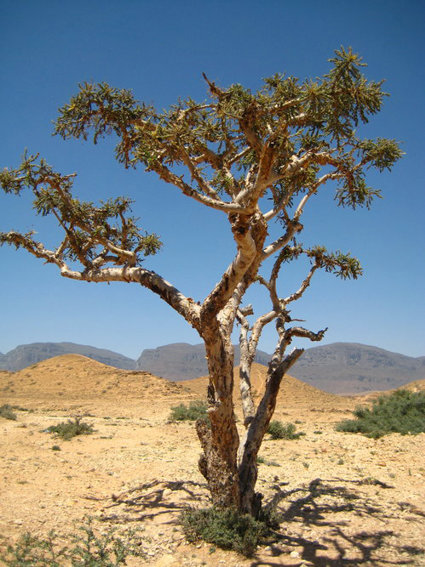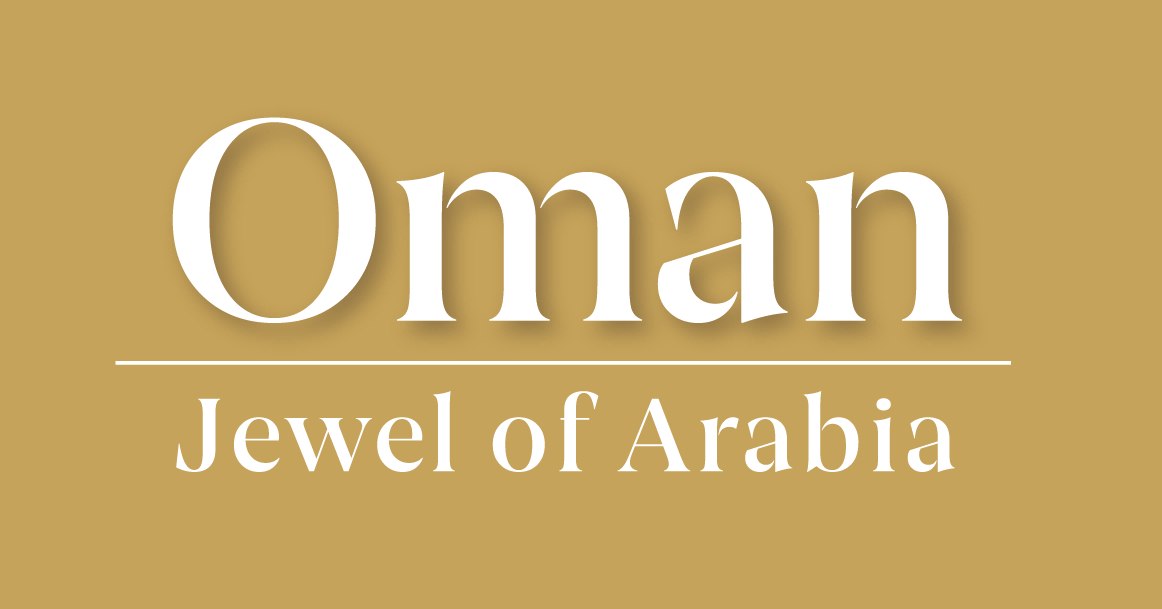
The Land of Frankincense
Aim and introduction
Frankincense is primarily grown in arid and semi-arid regions. The main areas where it is found are the Arabian Peninsula, particularly in Yemen and Oman, northeast Africa, including Somalia, Ethiopia and Sudan, and in the subtropical region of India.
In this lesson students will learn about the frankincense tree, examining its unique adaptations and cultural significance in Oman. They will also investigate the impact of climate change on the tree and the Land of Frankincense, a UNESCO World Heritage Site in the Dhofar region.
This lesson will take between 45 and 60 minutes.
Curriculum links
AQA 3.1.2.1. Deserts as natural systems. Characteristics of hot desert environments and their margins: climate, soils and vegetation (and their interaction). Water balance and aridity index.
OCR 1.1.3 Option C – Dryland Landscapes. 1.b. Dryland landscapes are influenced by a range of physical factors.
WJEC 4.2: Ecosystems. 4.2.1 The value and distribution of ecosystems.
Learning goals
1. Know what frankincense is and why is it sought after.
2. Describe the location of the Land of Frankincense, predicted climate change and its impacts.
3. Understand the alternative possible futures for the local population of the Dhofar region.
Learning outcomes
Greater depth: Students will describe in detail what frankincense is, and why it is a traded commodity. They will be able to explain why it is expensive, using geographical language and locations across the southern Arabian Peninsula. In the process they will expertly utilise layered GIS maps, and the WWF Risk Filter Suite. Some might be able to comment on the dangers of overharvesting.
Expected level: Students will describe what frankincense is, and why it is a traded commodity. They will be able to explain why it is expensive, using geographical language and locations across the southern Arabian Peninsula. In the process, they will use layered GIS maps, and the WWF Risk Filter Suite.
Working towards: Students will describe what frankincense is, and why it is a traded commodity. They will be able to explain why it is expensive, using geographical language. They will be introduced to ArcGIS and will learn the basics of how to use the software.
Key terms
Commodity
A basic good or raw material which is interchangeable with other goods, typically traded on exchanges where price is determined by demand and supply.
Frankincense
Frankincense is an aromatic gum resin obtained from trees. It is primarily found in regions such as Somalia, along the southern coastal of Arabia, and in parts of India.
Challenge and support
To challenge students read this document and follow the Ask students subheadings. Encourage them to create a fact file on frankincense and the history of the resin across South Arabia.
To support students consider marking some of the cards to help with the card sort. Giving students a time stamp for each of the video questions will help.
Starter
Ask students to discuss the picture on their sheets (also on the PowerPoint) suggested answers are in italics.
What does it show? What are it uses around the world?
The image shows a man scraping what looks like crystals from the trunk of a tree. This is frankincense. Some uses of frankincense are in perfumes, cosmetics and some religious ceremonies.
What geographical features can you identify in the picture, and how might they influence the cultivation of frankincense in Oman?
The picture shows the rugged terrain and arid landscape of the Dhofar region in Oman. These geographical features, including the rocky soil and dry climate, are ideal for the growth of Boswellia sacra trees, which produce frankincense.
How does the landscape in the picture reflect the climate of the region where frankincense is produced?
This picture shows a semi-arid to arid climate. The area experiences a unique climate influenced by the southwest monsoon, which brings moisture and cooler temperatures to Dhofar. This supports the growth of frankincense trees by providing the right balance of dryness and occasional moisture.
Describe the traditional harvesting method of frankincense depicted in this picture.
Harvesters make small incisions in the bark of the frankincense trees to collect the resin. The dry climate helps the resin to harden quickly, making it easier to collect.
What challenges might farmers face in this region when cultivating and harvesting frankincense?
Farmers in this region might face challenges such as overgrazing by livestock, which can damage young trees, and overharvesting, which can deplete the resin supply and harm the trees.
Card sort
Ask students to sort the cards into two groups, under the headings: description (orange), and uses (yellow). Answers in the lesson plan document.
Main 1 – the frankincense tree
1. Introduce the location and physical geography of the frankincense tree.
2. Using the slides on the PowerPoint, ask students to annotate the image of the Frankincense tree with information about physical characteristics, and plant adaptations.
Main 2 – the Khareef
Asia’s hottest and driest mountains are found on the Arabian Peninsula, in Oman. Each year an incredible transformation takes place as fog sweeps inland transforming the rocky slopes into lush green meadows.
1. Watch the video from 19:00. Ask students to answer the following questions (sample answers are in italics).
a. What lies in the far south of Oman? 19:10
The arid region of Dhofar.
b. How hot can temperatures reach? 19:20
40°C.
c. In the summer, what happens as moist tropical air meets the surface of the sea? 20:00
The water they carry condense and begins to form vast banks of fog. A major change in the weather. A phenomenon called the Khareef.
d. What is the Khareef? 20:30
The Khareef is a natural phenomenon otherwise known as a monsoon. The Khareef, which means autumn in Arabic, runs from June to September. As the clouds move inland, they are swept upwards. The plants across the Dhofar mountains collect moisture from the air and the parched mountains of Dhofar burst into life.
e. What is Arabia’s best adapted desert animals? 22:15
The camel. The Dromedary Camel is the most common camel in Dhofar. It eats almost any plants – a wide variety of desert vegetation – including dried, thorny or extremely salty plants. Camels have been used for millennia to carry the precious frankincense resin across vast deserts and rugged terrain.
f. What dwindles as summer ends? 22:55
The winds of the Khareef disappear and life must wait until the next Khareef.
Main 3 – ArcGIS
For online map work, ArcGIS is a great platform to use to produce GIS student work. The Geography Visualiser is a tool to which allows users to explore the world with maps and data.
Ask students to go through the steps on the PowerPoint to complete the map.
NOTE: Students will need to click on Map layers then the Legend icon to understand the colour coding.
Main 4 – the impacts
Predicted climate change
1. Provide information about the impacts using the PowerPoint.
2. Ask students to open the WWF Risk Filter Suite, select the Water Availability from the drop-down options. Then:
a. Describe the physical abundance or lack of freshwater resources for the region.
b. Zoom in on the Sea of Oman, where the majority of the population live. What level of water risk is present along this populated coastline?
c. Ask students to highlight other impacts by reading the article on flash flooding.
Plenary – The importance of conservation
1. Ask students to read and summarise the information about how frankincense is being conserved in Oman.
2. As an extension or homework task, students can find out about frankincense in other parts of the world by reading the article on frankincense in Ethiopia. Sample answers are in italics.
a. How has the increased demand for frankincense in the wellness industry impacted natural habitats across Ethiopia and Arabia?
The increased demand for frankincense in the wellness industry has led to overharvesting, threatening the trees' natural habitats in Ethiopia and Arabia
b. What are some of the ethical concerns surrounding the trade of frankincense resin, especially in relation to the local communities?
Ethical concerns include the exploitation of local communities who often receive minimal compensation for their labour in harvesting frankincense resin.
c. How do the prices of frankincense products in western markets compare to the earnings of those who collect the resin?
Frankincense products in western markets are sold at significantly higher prices compared to the earnings of those who collect the resin in its native regions.
d. What steps can be taken to ensure the sustainable harvesting of frankincense and protect it from extinction?
Sustainable harvesting practices and international regulations are essential to protect frankincense trees from potential extinction.
File nameFiles
File type
Size
Download
